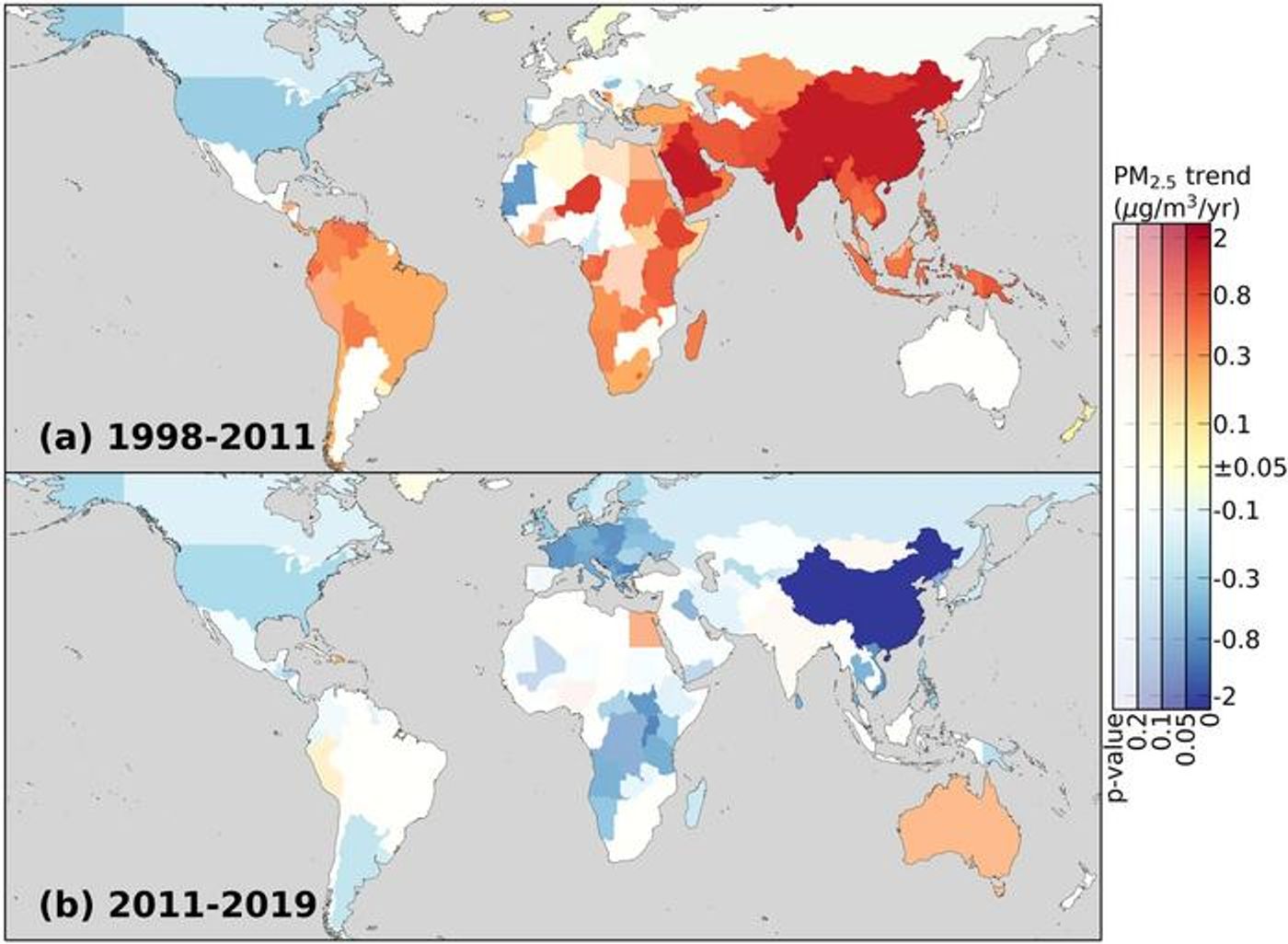Mitigating PM2.5 Pollution: Assessing Global Efforts and Effects
A collaborative team of researchers led by the Washington University in St. Louis (WUSTL) recently examined long-term trends in ambient fine particulate matter known as PM2.5 between 1998 and 2019 to determine if mitigation efforts undertaken by several countries have been effective in reducing global levels of PM2.5, which is known as a global environmental health risk factor and can lead to a myriad of respiratory issues, including millions of premature deaths around the world. Since PM2.5 is produced through fossil fuels, this study, which was recently published in Nature Communications, holds the potential to see if such mitigation measures have been successfully implemented.
Data maps that display decreasing trends in population-weighted PM2.5 around the world between 1998 and 2011 and between 2011 and 2019. (Credit: Martin lab, Washington University in St. Louis)
“The importance of PM2.5 as a leading risk factor for human health motivates assessment of its long-term changes,” said Dr. Randall Martin, who is a Raymond R. Tucker Distinguished Professor at WUSTL and a co-author on the study. “We sought to analyze our satellite-derived PM2.5 estimates for insight into global and regional changes in PM2.5 exposure and its health effects.”
The researchers discovered that while global population weighted PM2.5 levels exhibited increased levels starting in 1998 and peaking in 2011, these levels also exhibited steady decreases between 2011 and 2019. The researchers largely attribute this to a decrease in China and other areas around the world, including Africa, the Middle East, South Asia, western Europe, and North America. While these findings show promise, the team emphasized that further efforts need to be undertaken, as they estimated in 2019 that millions of premature deaths are still being accredited to PM2.5 levels.
“There is need to continue to sustain and develop global monitoring capabilities for PM2.5 both from satellite, but also from ground-based measurements,” said Dr. Martin. “The successes in PM2.5 reductions serve to demonstrate the benefits of PM2.5 mitigation efforts, and to motivate further mitigation.”
PM2.5 consists of particles that are 2.5 micrometers or smaller, which could cause adverse health effects, as noted above. Along with the decreased global levels discussed in this study, the United States has also experienced marked decreases in PM2.5 levels between 2000 and 2022, as well.
How much can PM2.5 be decreased in the coming years and decades? Only time will tell, and this is why we science!
As always, keep doing science & keep looking up!
Sources: EurekAlert!, United States Environmental Protection Agency, Nature Communications, Washington University in St. Louis, United States Environmental Protection Agency (1)









